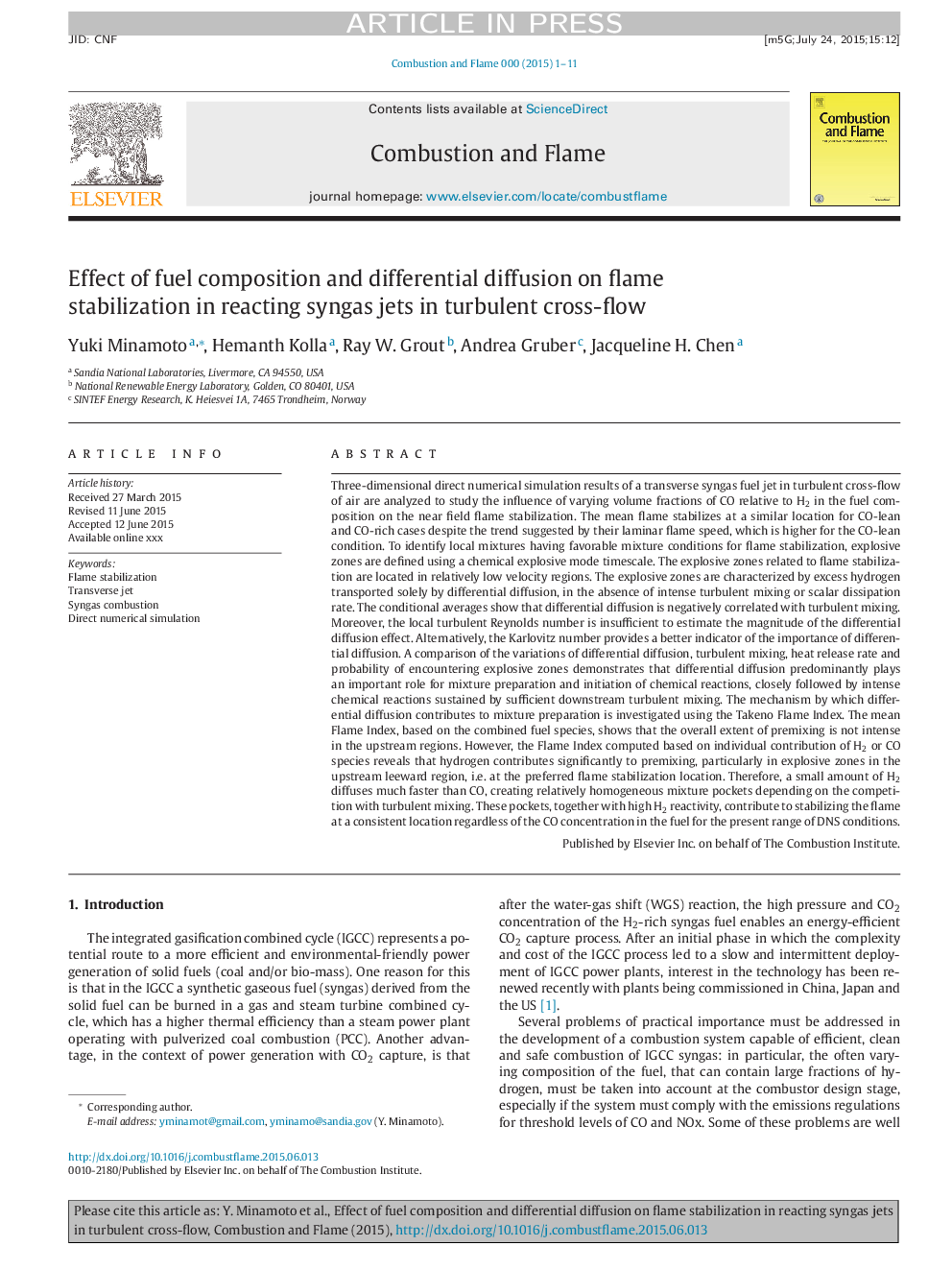| کد مقاله | کد نشریه | سال انتشار | مقاله انگلیسی | نسخه تمام متن |
|---|---|---|---|---|
| 10264754 | 458013 | 2015 | 11 صفحه PDF | دانلود رایگان |
عنوان انگلیسی مقاله ISI
Effect of fuel composition and differential diffusion on flame stabilization in reacting syngas jets in turbulent cross-flow
ترجمه فارسی عنوان
اثر ترکیب سوخت و انتشار دیفرانسیل بر تثبیت شعله در واکنش جت های سنتز گاز در جریان متقاطع آشفته
دانلود مقاله + سفارش ترجمه
دانلود مقاله ISI انگلیسی
رایگان برای ایرانیان
کلمات کلیدی
تثبیت کننده شعله، جت قطب نما، احتراق همگرا، شبیه سازی مستقیم عددی،
موضوعات مرتبط
مهندسی و علوم پایه
مهندسی شیمی
مهندسی شیمی (عمومی)
چکیده انگلیسی
Three-dimensional direct numerical simulation results of a transverse syngas fuel jet in turbulent cross-flow of air are analyzed to study the influence of varying volume fractions of CO relative to H2 in the fuel composition on the near field flame stabilization. The mean flame stabilizes at a similar location for CO-lean and CO-rich cases despite the trend suggested by their laminar flame speed, which is higher for the CO-lean condition. To identify local mixtures having favorable mixture conditions for flame stabilization, explosive zones are defined using a chemical explosive mode timescale. The explosive zones related to flame stabilization are located in relatively low velocity regions. The explosive zones are characterized by excess hydrogen transported solely by differential diffusion, in the absence of intense turbulent mixing or scalar dissipation rate. The conditional averages show that differential diffusion is negatively correlated with turbulent mixing. Moreover, the local turbulent Reynolds number is insufficient to estimate the magnitude of the differential diffusion effect. Alternatively, the Karlovitz number provides a better indicator of the importance of differential diffusion. A comparison of the variations of differential diffusion, turbulent mixing, heat release rate and probability of encountering explosive zones demonstrates that differential diffusion predominantly plays an important role for mixture preparation and initiation of chemical reactions, closely followed by intense chemical reactions sustained by sufficient downstream turbulent mixing. The mechanism by which differential diffusion contributes to mixture preparation is investigated using the Takeno Flame Index. The mean Flame Index, based on the combined fuel species, shows that the overall extent of premixing is not intense in the upstream regions. However, the Flame Index computed based on individual contribution of H2 or CO species reveals that hydrogen contributes significantly to premixing, particularly in explosive zones in the upstream leeward region, i.e. at the preferred flame stabilization location. Therefore, a small amount of H2 diffuses much faster than CO, creating relatively homogeneous mixture pockets depending on the competition with turbulent mixing. These pockets, together with high H2 reactivity, contribute to stabilizing the flame at a consistent location regardless of the CO concentration in the fuel for the present range of DNS conditions.
ناشر
Database: Elsevier - ScienceDirect (ساینس دایرکت)
Journal: Combustion and Flame - Volume 162, Issue 10, October 2015, Pages 3569-3579
Journal: Combustion and Flame - Volume 162, Issue 10, October 2015, Pages 3569-3579
نویسندگان
Yuki Minamoto, Hemanth Kolla, Ray W. Grout, Andrea Gruber, Jacqueline H. Chen,
